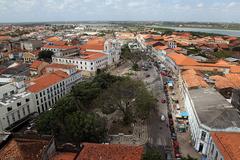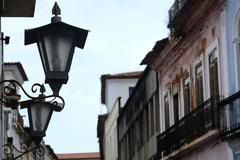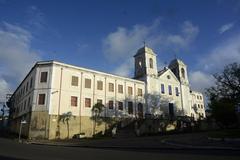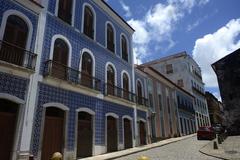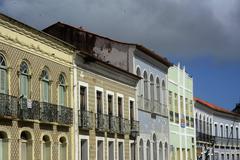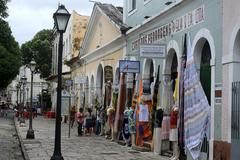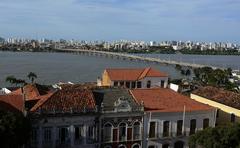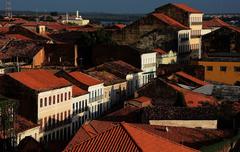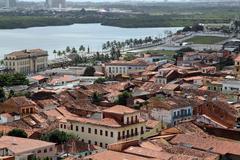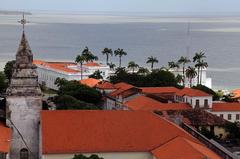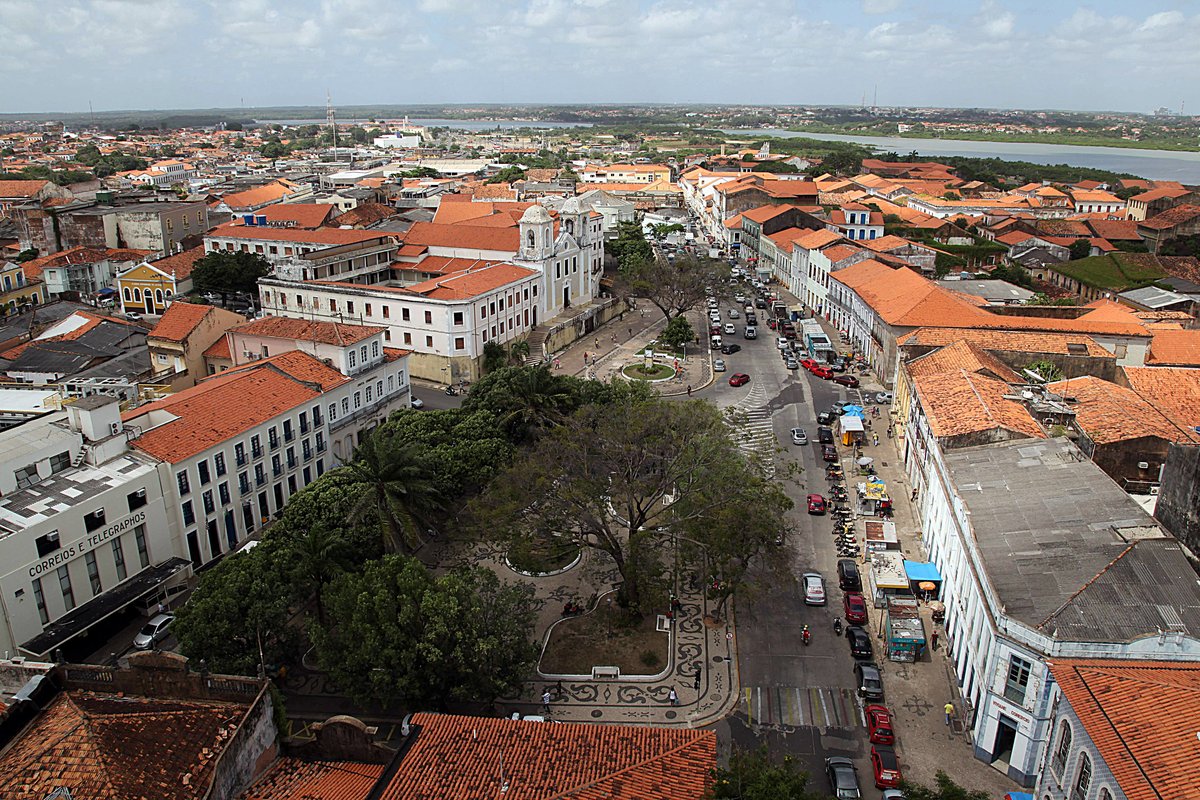
Visiting the Historic Centre of São Luís, Brazil: The Complete Guide
Date: 14/06/2025
Introduction: Why Visit the Historic Centre of São Luís?
Situated on São Luís Island at the edge of the Amazon and serving as Maranhão’s capital, the Historic Centre of São Luís captivates travelers with its rich colonial history and vibrant cultural fusion. Founded by the French in 1612 and later shaped by Portuguese and Dutch influences, São Luís is celebrated for its remarkably preserved colonial architecture—earning the nickname “Lisbon of South America” due to its intricate Portuguese azulejos (ceramic tiles), cobblestone streets, and iron-laced balconies. This lively district is a living crossroads of Indigenous, African, and European traditions, with highlights like the UNESCO-recognized Bumba Meu Boi festival, a thriving reggae scene, and a bustling local market culture. Recognized as a UNESCO World Heritage Site since 1997, the Historic Centre offers an immersive experience for history enthusiasts, culture seekers, and food lovers alike. This guide provides comprehensive details on visiting hours, tickets, accessibility, must-see attractions, local cuisine, travel tips, and festival highlights (UNESCO; Terra Nordeste; Brazil City Guides).
Table of Contents
- Colonial Origins and Urban Development
- Architectural Distinction: The “City of Tiles”
- Cultural Heritage: African, Indigenous, and European Fusion
- Key Landmarks: Visiting Hours & Ticket Information
- Living Heritage and Urban Vitality
- UNESCO World Heritage Recognition
- Preservation & Urban Revitalization
- Accessibility and Visitor Information
- Major Festivals and Cultural Events
- Local Cuisine: What to Eat & Where
- Practical Travel Tips & Safety
- FAQs
- Conclusion and Final Recommendations
- Sources
Colonial Origins and Urban Development
Founded by French officer Daniel de la Touche in 1612, São Luís is the only Brazilian city established by the French. The Portuguese soon took over in 1615, and a brief Dutch occupation (1641-1644) further enriched its cultural tapestry (UNESCO; LacGeo). The Portuguese implemented a distinctive rectangular street grid, a hallmark of Iberian colonial planning, which remains largely intact. This layout, adapted to the equatorial climate with elevated structures and wooden verandas, helped preserve the city’s unique character, especially during economic stagnation in the early 20th century (UNESCO).
Architectural Distinction: The “City of Tiles”
São Luís boasts the largest collection of Portuguese colonial architecture in Latin America, with over 3,500 historic buildings from the 17th to 19th centuries (Terra Nordeste). The city’s signature azulejos—glazed tiles imported from Portugal—cover facades and interiors, reflecting sunlight and helping to cool buildings. The result: a dazzling cityscape of color and light, further enhanced by cobblestone streets, ornate cornices, tall windows, and wrought-iron balconies (UNESCO).
Cultural Heritage: African, Indigenous, and European Fusion
São Luís’s identity is forged from centuries of cultural melding. Descendants of Indigenous peoples, African slaves, Europeans, and mixed-heritage Cafuzos all contribute to the city’s traditions, cuisine, and music (Visit Brasil; Terra Nordeste). The annual Bumba Meu Boi festival—a vibrant display of music, dance, and costumes—epitomizes this fusion and is recognized by UNESCO as Intangible Cultural Heritage (Terra Nordeste). São Luís is also Brazil’s “Reggae Capital,” with a lively music scene featuring reggae, forró, and tambor de crioula (Brazil City Guides).
Key Landmarks: Visiting Hours & Ticket Information
Palácio dos Leões
- Highlights: Former French fort, now the governor’s residence; neoclassical and colonial styles; panoramic views.
- Hours: Tuesday–Sunday, 9 AM–5 PM.
- Tickets: Free; guided tours available (book in advance).
- Official Information
Teatro Arthur Azevedo
- Highlights: Second-oldest theater in Brazil (1817); neoclassical architecture; performances and guided tours.
- Hours: Tuesday–Saturday, 10 AM–4 PM (tours); performance times vary.
- Tickets: Varies; tours low-cost or free.
- Theater Details
São Luís Cathedral (Catedral da Sé)
- Highlights: 17th-century Baroque masterpiece with ornate altars and azulejo panels.
- Hours: Monday–Saturday, 7 AM–6 PM; Sundays for services.
- Tickets: Free.
- Cathedral Info
Museu Histórico e Artístico do Maranhão
- Highlights: 19th-century mansion with artifacts and regional history.
- Hours: Tuesday–Sunday, 9 AM–5 PM.
- Tickets: Small fee; discounts for students/seniors.
- Museum Info
Mercado das Tulhas (Casa das Tulhas)
- Highlights: 19th-century market; local foods, crafts, and daily life.
- Hours: Daily, 7 AM–6 PM.
- Tickets: Free.
- Market Info
Note: Accessibility in historic buildings is improving but can be limited—check ahead if you have mobility needs.
Living Heritage and Urban Vitality
Unlike many preserved historic centers, São Luís’s is alive with shops, cafes, homes, and nightlife. Restoration efforts since the 1990s have balanced conservation with urban needs, ensuring the district remains a dynamic part of city life (World Heritage Site; Tourist Maker).
UNESCO World Heritage Recognition
The Historic Centre of São Luís was inscribed as a UNESCO World Heritage Site in 1997 for its exceptional colonial urban fabric and harmonious integration with its riverside setting (UNESCO). This status has driven global awareness and funded crucial restoration and preservation projects.
Preservation & Urban Revitalization
Restoration initiatives—supported by local, federal, and international organizations like the Inter-American Development Bank—have focused on:
- Facade Restoration: Cleaning and repairing azulejos and masonry.
- Infrastructure Upgrades: Improved drainage, lighting, and accessibility.
- Adaptive Reuse: Converting historic buildings into hotels, museums, and venues.
- Urban Renewal: Projects like the renovated bus terminal add public spaces and support local commerce (ArchDaily).
Accessibility and Visitor Information
- Mobility: Some ramps and accessible routes exist; contact tourism offices or venues for details.
- Safety: Daytime visits are safe; extra caution at night and in less-populated areas.
- Tourist Info: Centers provide maps and guidance in Portuguese and sometimes English.
Major Festivals and Cultural Events
Bumba Meu Boi Festival
- When: June–July
- What: UNESCO-listed spectacle of music, dance, and costumes; rooted in Afro-Indigenous-Portuguese heritage.
- Where: Praça Nauro Machado, Casa do Maranhão, and public squares
- Festival Details
São João Festivities
- When: June
- Features: Folk dances, bonfires, street food, colorful décor.
- Festival Info
Other Events
- Festa do Divino Espírito Santo: Religious processions in May/June.
- Festejo de Nossa Senhora da Vitória: November, honoring the city’s patron saint.
- Festival Guarnicê de Cinema: June film festival.
- Carnaval de São Luís: Parades and samba schools, February/March.
Local Cuisine: What to Eat & Where
Must-Try Dishes
- Arroz de Cuxá: Tangy rice with vinagreira, shrimp, and spices.
- Moqueca de Camarão: Prawn stew with coconut milk.
- Tapioca: Cassava pancakes, sweet or savory.
- Vatapá: Creamy bread and shrimp dish.
- Peixe Frito: Fried fish with beans and farofa.
Recommended Restaurants
- Cabana do Sol: Grilled meats and seafood.
- Cafofinho da Tia Dica: Traditional home cooking.
- Flor de Vinagreira: Maranhão cuisine with veggie options.
- Coco Bambu & Ferreiro Praia: Seafood and Brazilian classics.
Tip: Bottled water is recommended; street food is generally safe at busy, reputable stalls.
Practical Travel Tips & Safety
- Best Time to Visit: July–December (dry season); June for festivals.
- Getting There: SLZ International Airport (13 km away), taxis and ride-hailing apps recommended.
- Getting Around: Walk the center; taxis/Uber for longer distances or after dark.
- Safety: Watch valuables, avoid isolated areas at night, use official transportation.
- Language: Portuguese is standard; basic phrases or translation apps help.
- Money: BRL (Brazilian Real); cards widely accepted but cash is useful for small purchases.
- Dress: Lightweight clothing, sun protection, modest attire for religious sites.
FAQs
Q: What are the visiting hours for main sites?
A: Most open 9 AM–5 PM, Tuesday–Sunday. Check individual sites for variations.
Q: Are tickets required?
A: Many attractions are free; some museums charge small fees.
Q: Is the Historic Centre accessible for people with disabilities?
A: Some improvements exist, but cobblestones and old buildings can be a challenge.
Q: Are guided tours available?
A: Yes, in Portuguese and English; booking ahead is advised.
Q: What’s the best time to visit?
A: July–December for dry weather; June for festivals.
Visual and Media Suggestions
- Maps and Virtual Tours: Available on official tourism websites.
- Photography: Early morning or late afternoon for best light. Top spots: Palácio dos Leões, Rua Portugal, Praça Dom Pedro II, festival scenes.
- Alt Tags: Use descriptive tags like “Palácio dos Leões visiting hours” or “São Luís historical sites map.”
Conclusion and Final Recommendations
The Historic Centre of São Luís is a rare gem, blending centuries-old architecture, rich Afro-Brazilian and Indigenous traditions, and a dynamic urban lifestyle. Preservation efforts ensure its beauty endures, while lively festivals, delicious regional cuisine, and a unique reggae scene make every visit memorable. Whether you’re wandering picturesque streets, joining a guided tour, or tasting local dishes, São Luís offers an immersive journey through Brazil’s living heritage.
Plan your visit now:
- Download the Audiala app for updated hours, guided tours, and insider tips.
- Explore more about Brazilian culture and festivals in our related articles.
- Follow us on social media for travel inspiration and real-time updates.
Sources
- UNESCO
- Terra Nordeste
- Brazil City Guides
- ArchDaily
- Mad Traveller
- Wild Trips
- Palácio dos Leões Official
- Teatro Arthur Azevedo
- Catedral da Sé
- Museu Histórico e Artístico do Maranhão
- Casa das Tulhas
- Bumba Meu Boi Festival
- São João Festival
